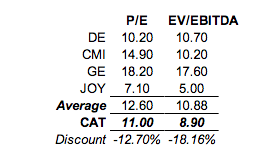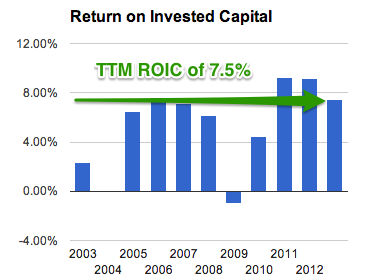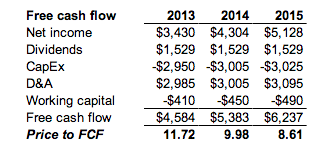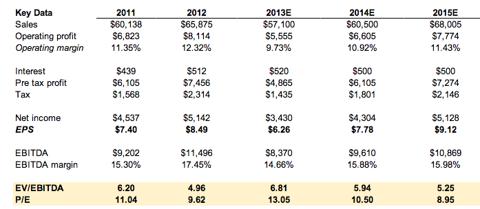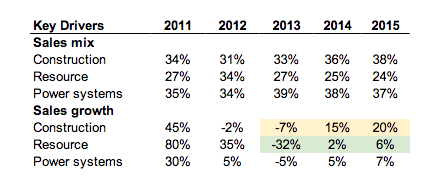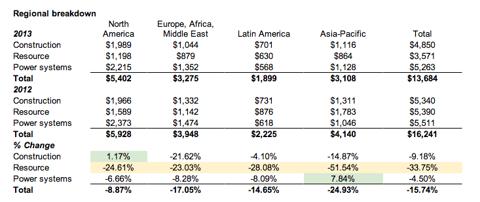Asian stocks rose, with the regional benchmark index headed for its biggest gain in nine months, amid signs the Japanese and U.S. economies are improving and assurances on stimulus efforts by the Federal Reserve.
Toyota Motor Corp. (7203), the world�� biggest carmaker, rose 1.5 percent, pacing gains among Japanese exporters as the yen weakened. Mitsubishi UFJ Financial Group Inc., Japan�� No. 1 lender, climbed 4.1 percent after the nation�� industrial output and retail sales beat expectations. China Overseas Land & Investment Ltd., the largest mainland property company traded in Hong Kong, rose 4.6 percent on speculation the government will remove a ban on refinancing for real-estate development.
The MSCI Asia Pacific Index climbed 2 percent to 130.84 as of 5:29 p.m. in Tokyo, heading for its biggest advance since Sept. 14, a day after Fed Chairman Ben S. Bernanke unveiled a third round of quantitative easing to boost the U.S. economy. The gauge is headed for a second month of losses and its first quarterly slump in a year after China�� money-market rates surged to a record and Bernanke said this month policy makers may start dialing down U.S. stimulus.
Best Financial Companies To Own In Right Now: ING Groep NV (ING)
ING Groep N.V. (ING), incorporated in 1991, is a global financial institution offering banking, investments, life insurance and retirement services to meet the needs of the customers. The Company�� segments include banking and insurance. Banking segment includes retail Netherlands, retail Belgium, ING direct, retail central Europe (CE), retail Asia, commercial banking (excluding real estate), ING real estate and corporate line banking. Insurance segment includes insurance Benelux, insurance central and rest of Europe (CRE), insurance United States (US), Insurance US closed block VA, insurance Asia/Pacific, ING investment management (IM) and corporate line insurance. In February 2011, the Company divested its real estate investment operation ING Real Estate Investment Management (ING REIM) to CB Richard Ellis Group Inc. In June 2011, the Company sold Clarion Partners. In July 2011, ING announced the completion of the sale of Clarion Real Estate Securities. During the year ended December 31, 2011, the Company divested its interests in ING Car Lease and ING IM Philippines. In February 2012, Capital One Financial Corp. acquired ING Direct business in the United States from the Company.
In June 2011, ING had completed the sale of its interest in China�� Pacific Antai Life Insurance Company Ltd. In June 2011, ING announced the completion of the sale of real estate investment manager of its United States operations, Clarion Partners, to Clarion Partners management in partnership with Lightyear Capital LLC. In October 2011, ING announced that it had completed the sale of REIM�� Asian and European operations to CBRE Group Inc. In December 2011 ING completed the sale of its Latin American pensions, life insurance and investment management operations.
Retail Netherlands
Retail Banking reaches its individual customers through Internet banking, telephone, call centers, mailings and branches. Using direct marketing methods, it is a provider of current account services an! d payments systems to provide other financial services, such as savings accounts, mortgage loans, consumer loans, credit card services, investment and insurance products. Mortgages are offered through a tied agents sale force and direct and intermediary channels. ING Bank Netherlands operates through a branch network of approximately 280 branches. It offers a range of commercial banking activities and also life and non-life insurance products. It also sells mortgages through the intermediary channel.
Retail Belgium
ING Belgium provides banking, insurance (life, non-life) and asset management products and services to meet the needs of individuals, families, companies and institutions through a network of local head offices, 773 branches and direct banking channels (automated branches, home banking services and call centers). ING Belgium also operates a second network, Record Bank, which provides a range of banking products through independent banking agents and credit products through a multitude of channels (agents, brokers, vendors).
ING Direct
ING Direct offers a range of financial products, such as savings, mortgages, retail investment products, payment accounts and consumer lending products. It operates in Canada, Spain, Australia, France, Italy, Germany, Austria and the United Kingdom. In June 2011, ING Group announced the sale of ING Direct USA to Capital One Financial Corporation.
Retail Central Europe
Retail Central Europe has a presence in Poland, and Romania and Turkey. ING in Poland is an Internet bank. During 2011, ING Bank Turkey launched the Orange account, the variable savings product. ING in Turkey also launched a mobile phone banking application. ING Bank Romania carried out its Internet banking site, Home��ank. In September 2011, a mobile version of the Home��ank Website was introduced.
Retail Asia
Retail Banking has a presence in Asian markets of India, China and Thailand. As o! f Decembe! r 31, 2011, the Company had 44% interest in ING Vysya and 30% interest in TMB Bank in Thailand. Bank of Beijing (BoB), in which ING has the largest single interest (16.07%) is a commercial bank in China. ING provides principally risk management and retail banking to BoB.
Commercial Banking
ING Commercial Banking supports the banking needs of its corporate and institutional clients to invest both retail and commercial bank customer deposits. It is a commercial bank in its home markets in the Benelux, as well as in Germany, Central and Eastern Europe. In addition to the banking services of lending, payments and cash management and treasury, it also provides solutions in other areas, including specialized and trade finance, derivatives, corporate finance, debt and equity capital markets, leasing, factoring and supply chain finance. Payments and Cash Management (PCM) and General Lending are its some of the product lines. Structured Finance (SF) is a specialist commercial lending business, providing loans to support capital intensive investments and working capital. It is managed in three groups: the Energy, Transport and Infrastructure Group; the Specialized Financing Group; and International Trade and Export Finance. Leasing and Factoring (L&F) provides financial and operating leasing services for a range of equipment, as well as receivables financing and other factoring solutions for commercial banking clients. The Financial Markets (FM) is the global business unit that manages ING�� financial markets trading and non-trading activities. FM is managed along three business lines: ALCO manages the interest rates exposures arising from the traditional banking activities, Strategic Trading Platform incorporates the primary proprietary risk taking units, and Clients and Products is the primary customer trading facilitation business line.
Real Estate
During 2011, Real Estate Finance (REF) maintained its credit portfolio. Real Estate Development (ING RED) and! Real Est! ate Investment Management (ING REIM) has a controlled wind down of activities.
Insurance Benelux
Duirng 2011, Nationale-Nederlanden introduced bank pension savings products and annuities. ING Life Belgium introduced a new Universal Life product. Nationale-Nederlanden also received a license from the Dutch Central Bank to launch a defined contribution DC company pension product PPI in Europe. NN Services introduced a processing and information technology system (business process management layer) for several legacy lines of retail Life businesses. NN Services IT manages all the closed book business of Nationale-Nederlanden. ING�� life insurance products in the Benelux consist of a range of traditional, unit-linked and variable annuity policies written for both individual and group customers. ING is also a provider of (re-insured) company pension plans in the Netherlands.
NG Benelux��non-life products, mainly in the Netherlands, include coverage for both individual and commercial/group clients for fire, motor, disability, transport and third party liability. Nationale-Nederlanden has also a central product manufacturing service for property and casualty insurance, which has developed products for ING Bank in Belgium and ING Bank in the Netherlands. ING offers a range of disability insurance products and complementary services for employers and self-employed professionals (such as dentists and general practitioners).
Insurance Central and Rest of Europe
Insurance Central and Rest of Europe has life insurance companies in Hungary, Poland, the Czech and Slovak Republics, Romania, Bulgaria, Greece, Spain and Turkey. It has pension funds in Poland, Hungary, the Czech and Slovak Republics, Bulgaria, Romania and in Turkey. ING offers a range of individual endowment, unit linked, term and whole life insurance policies designed to meet specific customer needs. It also has employee benefits products, as well as pension funds, that manage individu! al retire! ment accounts for individuals. The latter comprise both mandatory and voluntary retirement savings.
Insurance United States (Excluding US Closed Block Va)
ING Insurance US offers retirement services (primarily defined contribution plans), life insurance, fixed annuities, employee benefits, mutual funds, and broker-dealer services in the United States. ING Insurance US operates four businesses: Retirement Plans, Individual Retirement, Individual Life and Employee Benefits. ING Insurance US�� Retirement Plans business is a contribution providers, which offers a range of retirement solutions to all sizes and types of employers, including businesses for-profit ranging from start-ups to large corporations, public and private school systems, higher education institutions, state and local governments, hospitals and healthcare facilities, and not-for-profit organizations. ING Insurance US�� Retirement Plans business is a provider of defined contribution (DC) retirement plans in the United States based on assets under management and administration.
Insurance US Closed Block Va
ING US Closed Block VA consists of variable annuities issued in the United States that are primarily owned by individuals and were designed to address the demand for tax-advantaged savings, retirement planning, and wealth-protection. These annuity contracts were sold in the United States, primarily through independent third party distributors, including wirehouses and securities firms, independent planners and agents and banks.
Insurance Asia/Pacific
ING Insurance Asia/Pacific (IAP) is a provider of life insurance products and services. It is a life insurer in the region, with nine life operations in eight markets. IAP has ip operations in Japan and South Korea, operates a nt business in Malaysia, and is well in China, Hong Kong, Macau, India and Thailand. In April 2011, IAP, together with Public Bank Berhad and Public Islamic Bank Berhad, launched a joint ! venture i! n Malaysia, ING PUBLIC Takaful Ehsan Berhad, which will develop Takaful insurance products. In June 2011, IAP completed the sale of its 50% interest in Pacific-Antai Life Insurance Company Limited (PALIC).
The business units of IAP offer select types of life insurance, wealth management, and retail products and services. These include annuities, endowment, disability/morbidity insurance, unit linked/universal life, whole e, participating life, group life, accident and health, term life and employee benefits. In Hong Kong non-life insurance products (including medical, motor, fire, marine, personal accident and general liability) are also offered.
Insurance Latin America
ING completed the sale of its pensions, life insurance and investment management operations on December 29, 2011. These operations were in Chile, Colombia, Mexico, Peru and Uruguay.
ING Investment Management
ING IM is an investment manager of ING Group with activities in Europe, the Americas, Asia-Pacific and the Middle East. In October 2011, ING IM sold ING IM Australia. ING IM provides a range of actively-managed strategies, investment vehicles and advisory services in all major asset classes and investment styles. It delivers a range of investment strategies and services to ING�� global network of businesses and third-party clients.
Best Financial Companies To Own In Right Now: MFA Financial Inc (MFA)
MFA Financial, Inc., incorporated on July 24, 1997, is engaged in the business of investing, on a leveraged basis, in residential Agency mortgage-backed securities (MBS) and Non-Agency MBS. Its business objective is to generate net income for distribution to its stockholders resulting from the difference between the interest and other income it earn on its investments and the interest expense it pays on the borrowings, which it uses to finance its leveraged investments and its operating costs. Its operating policies require that at least 50% of its investment portfolio consist of ARM-MBS, which are either Agency MBS or rated in two rating categories by at least one of rating agency, such as Moody�� Investors Services, Inc., Standard & Poor�� Corporation (S&P) or Fitch, Inc. The remainder of its assets may consist of direct or indirect investments in other types of MBS and residential mortgage loans; other mortgage and real estate-related debt and equity; and other yield instruments.
The mortgages collateralizing the Company�� MBS portfolio are Hybrids, ARMs and 15-year fixed-rate mortgages. The Hybrids collateralizing its MBS typically have fixed-rate periods ranging from three to 10 years. Interest rates on the mortgage loans collateralizing its ARM-MBS reset based on specific index rates, which include London Interbank Offered Rate (LIBOR) or the one-year constant maturity treasury (CMT) rate. The mortgages collateralizing its ARM-MBS have interim and lifetime caps on interest rate adjustments. The Company�� Non-Agency MBS have been at discounts to face/par value.
Taylor Capital Group, Inc. operates as the bank holding company for Cole Taylor Bank that provides a range of commercial banking products and services primarily to closely-held commercial customers and their owner operators in the Chicago area. It offers various deposit products, including checking, savings, and money market accounts, as well as time deposits, and other deposit and credit services to commercial clients and community-based customers, including individuals and small local businesses. The company?s commercial lending activities primarily consist of providing loans for working capital and business expansion or acquisition; owner-occupied commercial real estate financing; revolving lines of credit; and stand-by and commercial letters of credit. It also originates and sells mortgage loans. In addition, the company provides treasury cash management services, including repurchase agreements, Internet balance reporting, remote deposit capture, positive pay, automa ted clearing house products, imaged lock-box processing, controlled disbursement, and account reconciliation services to commercial clients; and investment management and brokerage services. Further, it offers asset-based financing, including revolving lines of credit supported by receivables and inventory; and term loans supported by equipment and real estate. The company?s target commercial lending customers include businesses engaged in various industries, such as manufacturing, wholesale and retail distribution, transportation, construction contracting, and professional services. It operates through nine banking centers in the Chicago area. The company was founded in 1929 and is headquartered in Rosemont, Illinois.
Best Financial Companies To Own In Right Now: Washington Banking Company(WBCO)
Washington Banking Company operates as the bank holding company for Whidbey Island Bank that provides community commercial banking services in northwestern Washington. Its deposit products include interest-bearing demand and money market accounts, saving deposits, time deposits, NOW accounts, and noninterest-bearing demand deposits. The company?s portfolio of loans comprises secured and unsecured commercial loans for working capital and expansion; real estate mortgage loans, including one-to-four family residential and commercial real estate loans; and real estate construction loans, such as commercial real estate, one-to-four family residential construction, and speculative construction loans. Its consumer loan portfolio include automobile loans, boat and recreational vehicle financing, home equity and home improvement loans, and other secured and unsecured personal loans, as well as SBA guaranteed loans for small and medium sized businesses. In addition, the company pro vides non-deposit managed investment products and services, and sweep investment options. As of December 31, 2010, it operated 30 branches in 6 counties located in northwestern Washington. The company was founded in 1996 and is based in Oak Harbor, Washington.


